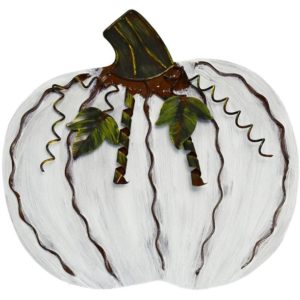
Lately, I am thinking about my roles and responsibilities as a person who consumes.
Among the things I have consumed so far today are: shampoo, conditioner, soap, toilet paper, Kleenex, water, coffee, dishwasher detergent, gas for my daughter’s carpool drive to and from school, more coffee, refrigerated leftovers, energy for my lights, computer, and air conditioning, and a Westbrook sour beer. Like many people in the Western World, I regularly buy and use lots of things: food, shelter, clothing, energy, goods and services.
I’ve rarely wondered about where the things come from, or where they go after I discard them. That is not my responsibility, right? My responsibility is to be fair to the person who gave or sold it to me (i.e. don’t steal it), and to dispose of it in a legal and compliant manner (i.e. don’t throw it in a ditch).
But now I wonder if maybe that kind of thinking is what’s got us into a bit of a pickle — what with the climate crisis, and the sweatshops, and the toxic food chain, and the social injustices.
Below, I will dig into my consumer thought process.
How do I make purchasing decisions?
I buy what is cheap and convenient. Or alternately, what is luxurious and elevates my status. I discard what is no longer convenient, and I do it in the most expedient manner available.
When I want chicken for dinner, I either: A) go to a restaurant and order it from the menu or B) go to the grocery store and buy a cellophane-wrapped, slippery, pinkish, teardrop-shaped thing. In either case, the product I consume (and feed to my family) bears no resemblance to a bird and is far too enormous to have come from a healthy one.
If I’m out and about and thirsty, I might buy a bottle of water. I drink it and toss it in a garbage bin or, – if one is handy – a recycling receptacle. In general, if I have something to get rid of, I put it in a dumpster and it becomes someone else’s job to figure out what to do with it.
The other day, I was grocery shopping for a friend who was ill. I wanted to give her a little something to brighten her day. But I didn’t want to spend a lot of money. So I bought an item of seasonal decor for $4.88. When I got home, I saw the sticker on the back said “Guangzhou Youth Arts & Crafts Co.” Call me cynical, but, whereas the clever CEO of Walmart makes $22,000,000 million per year, I doubt any youth from Guangzhou are benefitting appreciably from my $4.88.
Today, I am thinking maybe I should be taking more personal responsibility for the things I acquire and the things I dispose of.
Where does it come from?
When I acquire something, I’ve started asking more questions. Who made it? How was it made? What is it made of? What was involved in its journey before it got to me? Who profits from my purchase? Is this an “honorable harvest” (read Braiding Sweetgrass if you haven’t.)
Where does it go?
When I’m done with something, there are more questions to be asked. Who handles it? Where does it go? What does it become?
This exquisite, generous world was created as a perfect circular system. And for many millions of years, things have gone along swimmingly in their circular way…The seed grows. The fruit is produced. The fruit is consumed. The “recycled” seed is replanted. The seed grows. And so on. We all benefit when we respect this beautiful design and participate responsibly within it.
What would change if I knew the answers to where it came from and where it goes?
Let’s look a little more closely at that seasonal decoration – a faux wood pumpkin – I bought from Walmart for $4.88 for an example. If I had taken the time to find out where this product came from, I would have been a little sickened by the marketing tactic in the company name: “Guangzhou Youth Arts and Crafts.” This seems to me to be a sneaky way to put lipstick on the fact that the item was made by children in China.
Having since researched the Guangzhou Youth Arts and Crafts Co, this company doesn’t share any information about the way their young workers are treated or how the profits from their child labor are managed.
And what about the journey this product took to get from Guangzhou, China to Pooler, GA? How much pollution was created during the voyage across the ocean? Was the pumpkin worth it? And I haven’t even touched yet the question of what in the world the pumpkin was made of or what harm came to the environment in its manufacture.
It’s easy to get a little lost in this rabbit hole, and start asking lots of other questions too. Like, what’s the appeal of a fake pumpkin anyway?
Is it because somewhere inside, I am grieving the fact that I am so divorced from the natural rhythm of the earth and her seasons that I chose a synthetic approximation which ironically caused further damage to the healthy relationship that I am trying to mimic between humans and nature?
If I had given all of these things a minute of thought, I think I would have left the fake pumpkin at Walmart, and walked myself over to Polk’s Market to purchase some of their gorgeous, warty gourds which actually came out of the earth, here in Georgia.
The fact that I didn’t think of this before I made my purchase is indication that I have a long way to go to become a responsible consumer, but I hope I am making progress. More on “where does it go” later.